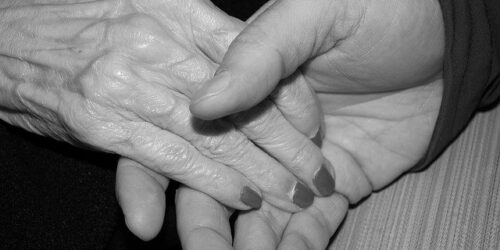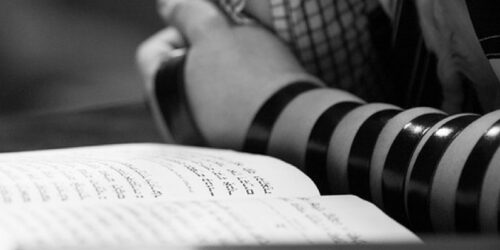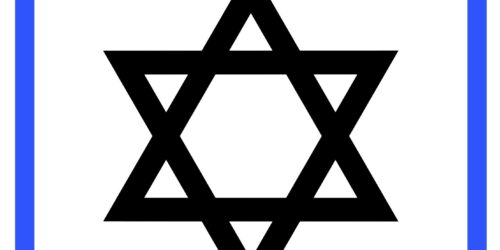If you, like me, are the product of a synagogue Supplemental/Hebrew/Religious School for your Jewish education, then you may have missed a few holidays. As a synagogue education director, I can tell you that Passover is pretty much the end of our school year. Everything after that falls by the wayside as teachers work to teach another prayer or finish the curriculum in the few weeks left. So, here is a rundown of what you might have missed.
After Passover, we enter what I call “a yom a yom” (a day a day). There are a series of one-day commemorations that we group as “Israel holidays.” First is Yom HaShoah, occurring just five days after the end of Passover. This is the Jewish Holocaust Remembrance Day (International Holocaust Remembrance Day is January 27). Yom HaShoah is observed on the 27th of Nisan. In Israel, the entire country comes to a standstill for two minutes while air raid sirens sound throughout. It is customary to light a yahrzeit (memory) candle; some light six candles to remember the six million Jews who were killed in the Shoah.
Just a week later is a double holiday: Yom HaZikaron on the 4th of Iyar, immediately followed by Yom HaAtzmaut on the 5th of Iyar. Yom HaZikaron is the Israeli Memorial Day, honoring all military personnel who died fighting to establish the State of Israel and while serving in the armed forces after 1948. As on Yom HaShoah, the air raid sirens sound throughout the country, heralding two minutes of silence. The entire country stops, including everyone getting out of vehicles and standing on the roadways. As Yom HaZikaron comes to an end at sunset, Israelis transition to celebrating Yom HaAtzmaut, Independence Day, the day in 1948 that Israel was declared a State. Like the American July 4th, Yom HaAtzmaut is celebrated with picnics, barbecues, and fireworks.
The last of the “yoms” is Yom Yerushalayim, celebrated three weeks later on the 28th of Iyar. This recalls the day in 1967 when the Israel Defense Forces were able to capture the Old City during the Six-Day War and reunite a Jerusalem that had been divided between Israel and Jordan since 1948. This again allowed access to the Kotel, or Western Wall.
But wait; there’s more. At the end of the second Passover Seder, we begin counting the Omer. We count 49 days of the Omer to the holiday of Shavuot. Along the way, on the 33rd day of the Omer, we have the holiday of Lag B’Omer. The word lag is formed from the letters lamed and gimel and is the number 33. It falls on the 18th of Iyar, between Yom HaAtzmaut and Yom Yerushalayim. Although it has several origin stories, the most commonly held is that it was the day that marked the end of a plague that killed the students of Rabbi Akiva in the beginning of the 2nd century CE. It is also believed to be the yahrzeit (anniversary of the death) of Shimon bar Yochai, a disciple of Rabbi Akiva and the author of the Zohar, a major work on Jewish mysticism, or Kabbalah. On Lag B’Omer, we celebrate by lighting bonfires and shooting bows and arrows to commemorate the Bar Kochba rebellion against the Roman Empire in 135 CE.
The counting of the Omer (an omer is a measure of barley, offered as a sacrifice when the Temple stood in Jerusalem) begins with the second night of Passover and continues 49 days until Shavuot. This is the time between leaving Egypt and when the Israelites were given the Torah at Mount Sinai while wandering through the wilderness. The beginning of the Omer is a time of semi-mourning, in memory of the plague that killed Rabbi Akiva’s students. This means that traditional Jews do not cur their hair, shave, get married, or go to parties. On Lag B’Omer, the 33rd day, these restrictions end, as the plague ended.
At the end of the 49 days of the Omer, we arrive at the holiday of Shavuot. Shavuot falls on the 6th of Sivan, usually between mid-May and mid-June. Shavuot is actually a major holiday. It is one of the Shalosh Regalim, the three Pilgrimage Festivals, when all Jews were commanded to bring sacrifices to the Temple in Jerusalem. Along with Sukkot and Passover, it is an agricultural holiday, when the wheat was harvested. On this day, the “first fruits” were brought from the seven species that the Israelites are promised they will find in the Promised Land: wheat, barley, grapes, figs, pomegranates, olives, and dates. With the Temple no longer there, several customs have replaced the sacrificial observance. The Megillah, or Story, of Ruth is read during services. The Book of Ruth tells the story of a woman who chose to stay with her mother-in-law after the death of her husband, to choose to be Jewish. King David is a descendant of Ruth. It is customary to eat dairy foods on Shavuot, including such treats as blintzes and cheesecake. There are several rabbinic explanations for this. One is that since the Israelites were just told how to keep kosher with the revelation of the Torah, they were not prepared to slaughter meat correctly, so they ate dairy. Another is that the Hebrew word for milk, chalav, has a numerical value of 40, which is how many days and nights Moses spent on Mount Sinai receiving the Torah from God. Another custom is to stay awake all night, studying Torah, known as Tikkun Leil Shavuot.
But wait; there’s more. If you went to Jewish summer camp, you probably observed Tisha B’Av in some fashion. Again, the name is the date: tisha is the 9th day of the month of Av. Falling in July or August, it is a day of mourning that remembers a number of tragedies that have befallen the Jewish people throughout history. The First Temple in Jerusalem was destroyed by Nebuchadnezzar in 587 BCE and the Babylonian exile began. Then in 70 CE, the Second Temple was destroyed by the Romans. In 135 CE, the Romans crushed Bar Kochba’s revolt. More modern events that happened on or near the 9th of Av include the Spanish Expulsion in 1492 and the approval of the Nazis’ “Final Solution” in 1941. Tisha B’Av is a fast day, beginning at sunset. Like Yom Kippur, there is no eating or drinking, no wearing of leather, and so on. It is customary to read the Megillah or Scroll of Eicha, Lamentations.
After Tisha B’Av, we find ourselves heading back into “school year” mode, with the month of Elul beginning three weeks later. This starts the buildup towards Rosh Hashanah and the beginning of the next Jewish year. And now you know what you’ve been missing!






